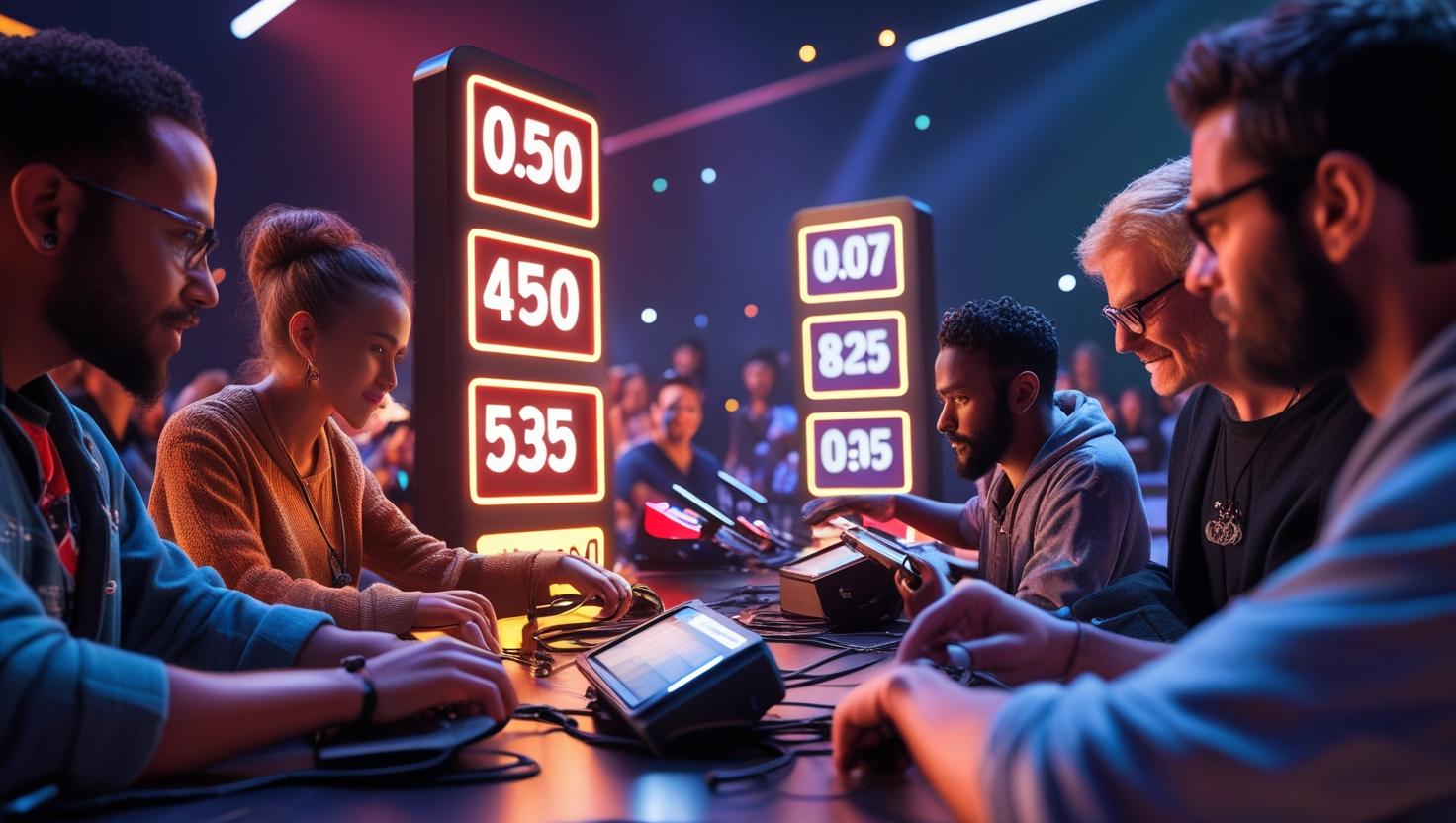Countdown Timers and Accessibility: Designing for Inclusivity in Live Events

Countdown Timers and Accessibility: Designing for Inclusivity in Live Events
Live events and virtual conferences are becoming more inclusive than ever, with captioning, screen reader support, and multilingual options. But one critical detail is often overlooked: countdown timers.
Whether it’s a countdown timer for presentation pacing, a backstage stage timer, or an on-screen countdown timer for speakers, the visibility and accessibility of these tools can directly impact the inclusivity of your event. Timers that aren’t designed for diverse abilities—like visual impairments, neurodiversity, or cognitive differences—may exclude audience members and presenters alike.
This blog explores how tools like Let’s Time IT can be used not just to schedule and automate countdowns, but to make them accessible, readable, and inclusive for all.
Why Accessibility in Timers Matters
More Than Just Visuals
For people with visual challenges, rapidly changing countdowns or poorly contrasted text can be confusing or invisible altogether.
Timing Impacts Understanding
People with auditory or cognitive processing differences benefit from knowing exactly how much time is left before a speaker starts or a session changes.
Presenters Deserve Inclusive Tools Too
A timer for presenters isn’t useful if it’s too small to read or can’t be discreetly shared with those using assistive technologies.
Accessibility = Better UX
When timers are accessible, it’s not just a compliance win—it’s a smoother experience for everyone involved.
Key Accessibility Challenges in Traditional Timers
Problem | Impact |
Low contrast text | Difficult for visually impaired users |
Small timer displays | Hard to read on-stage or in remote sessions |
Lack of screen reader support | Inaccessible for blind users |
No alternate formats | No vibration, audio, or haptic cues |
Static formats | Can’t be resized or repositioned easily |
Inclusive Timer Design Principles
To make countdown timer for speakers and audiences fully accessible, consider these foundational design choices:
High Contrast and Legibility
Use large, bold fonts with high contrast (e.g., white on black). Avoid red/green combinations that challenge colorblind users.
Screen Reader Compatibility
Timers from Let’s Time IT can include accessible metadata, allowing screen readers to narrate the countdown and key instructions.
Clear Labels and Alerts
Instead of “00:30”, use labels like “30 seconds remaining” or “Next speaker in 30 seconds” to reduce ambiguity.
Multimodal Feedback
Incorporate audio beeps, visual flashing, or haptic vibration (for mobile use cases) to support different sensory needs.
Adjustable Placement
Let speakers move their remote-controlled countdown timer to preferred screen corners or devices without disrupting their workflow.
How Let’s Time IT Supports Accessible Timers
Let’s Time IT was built for flexibility, scalability, and discreet control—making it the perfect foundation for inclusive timing.
Key Accessibility Features:
- Browser-based: Works with zoom tools, screen magnifiers, and screen readers
- Presenter mode: Show timer for presenters only in backstage or private view
- Adaptable fonts and color schemes (dark mode, high-contrast presets)
- Voice-over support with time alerts
- Works on desktop, mobile, and tablets
Whether it’s a countdown timer for events or a behind-the-scenes stage timer, Let’s Time IT ensures clarity for all stakeholders—audiences and speakers alike.
Step-by-Step: Creating Accessible Timers with Let’s Time IT
Step 1: Create a Timer Campaign
- Log in to Let’s Time IT
- Navigate to the “Create” section
- Add Campaign Title, Description, and Expiry Date
Step 2: Sync with Speaker or Session Schedule
- Assign timers to breakout sessions, training segments, or stage blocks
- Add screen reader metadata and alternative labels for timers
Step 3: Enable Discreet and Accessible Displays
- Provide adjustable timer views for speakers
- Use speaker-only dashboards for visual or audio cues
- Choose high-contrast color schemes
Step 4: Adjust in Real Time
- Pause or reset timers with remote-controlled countdown timer tools
- Add visual or audible alerts for time warnings (30s, 10s remaining)
These steps allow countdown timer for presentation pacing without overwhelming or excluding participants.
Where Accessibility Enhances Event Impact
Virtual Keynotes
Ensure countdown timer for speakers is readable for neurodiverse or elderly audiences joining remotely.
Hybrid Conferences
Sync stage timer displays across physical and digital screens while offering accessible versions backstage.
Internal Training
Let employees with visual or processing differences track time visually and/or through audio cues.
Accessibility-First Events
Events focused on inclusion should prioritize accessible timekeeping as part of the overall UX.
Add to Calendar… Accessibly
Let’s Time IT supports countdown timer for addevent integration—embedding timers into:
- Confirmation emails
- Calendar invites
- Mobile event passes
Make sure these previews are screen-reader compatible and clearly labeled for universal access.
When you use “add to event” functionality, you’re not just improving turnout—you’re helping users of all abilities plan and participate on equal footing.
Best Practices for Inclusive Timer Setup
- Use high-contrast, large-text designs by default
- Test timers with screen readers and magnifiers
- Provide alternate cues (audio/vibration) when possible
- Avoid flashing animations that may trigger seizures
- Allow adjustable settings for speakers using different devices
Conclusion: Time Is Universal—Make It Accessible
Every second counts in a live event—but only if every person can see and understand the countdown. Whether you’re running a breakout session or a keynote, using an accessible stage timer or timer for presenters is about more than timing—it’s about respect.
With Let’s Time IT, you don’t have to choose between scalability and inclusivity. You get discreet, platform-agnostic countdowns that work for everyone in the room.
Ready to create inclusive, accessible events?
Visit Let’s Time IT to start building event timers that include every speaker, moderator, and attendee—on time, every time.